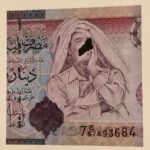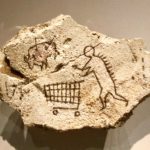Ian Hislop Brings Dissent to The British Museum

By-line: Khadija Kothia, BA History
Photo Credit: Khadija Kothia
The discourse surrounding institutions such as The British Museum has been brought into the spotlight over the past few months. It was interesting to see an exhibition centred on political dissent in a museum under so much controversy for its role in upholding imperial power. Ian Hislop is the Editor of The Private Eye, a political satire magazine and regular figure on the BBC’s “Have I Got More News For You”. His exhibition drew out the satirical sentiments in acts of dissent across the world, albeit with a focus on Britain. Displayed were a wide variety of objects and media to interact with, from audio recordings to physical objects.
Hislop’s exhibition of political objection is refreshingly light-hearted, diverse and does well to demonstrate the scope of dissent throughout history
Here are my top picks from the exhibition:

5. This statuette of a man on a toilet was part of a group of stone figurines purchased by the Museum in the 1930s. Said to be from ancient Yemen, they were later identified as fakes. What makes the mockery a little more personal was that these figurines were deliberately made to mock the trade of antiquities and highlight that just about anything can sell for a ton of money if it looks ‘antique’ enough.

4. As if being prosecuted for being a satirical publisher wasn’t enough to stop Charles Philipon in 1831, the French satirist spent his time in prison arguing against the absurdity of his prosecution by drawing King Louis Philipe I


3. Perhaps these are not so eye-catching as objects of dissent, but in my opinion, they are extremely effective. Below are a few examples of the global and historical uses of currency for political dissent. The coin edged with a hanging pope originated from 18th century Britain, while the note displays the ripped out face of Ghaddafi during the 2011 Libyan Uprising. Dissent through currency is a unique form of protest. It is subtle yet poignant, and the message is easily spread far and wide.

2. In 2017, millions of women marched worldwide in support of women’s rights. ‘Pussyhats’ like the hat pictured above were a common sight, worn by thousands to reclaim the misogynistic term for female genitalia – a word which President Trump had used in a leaked interview to boast about assaulting women.

- Wherever there is political satire, Banksy is never far away. In 2005, a ‘cave painting’ appeared in one of the galleries in The British Museum. It was even given a fake identification number and label, and took the museum three days to realise the hoax. Even then, it took a feature on Banksy’s website to realise that cavemen didn’t use shopping trolleys.
Final thoughts: Hislop’s exhibition of political objection is refreshingly light-hearted, diverse and does well to demonstrate the scope of dissent throughout history. The exhibition reinforces the historical uniqueness of satire in continuously giving power and a voice to the masses. In my heart of hearts, an exhibit mocking The British Museum’s colonial history and looted
The exhibition was held between 6 September 2018 to 20 January 2019.



